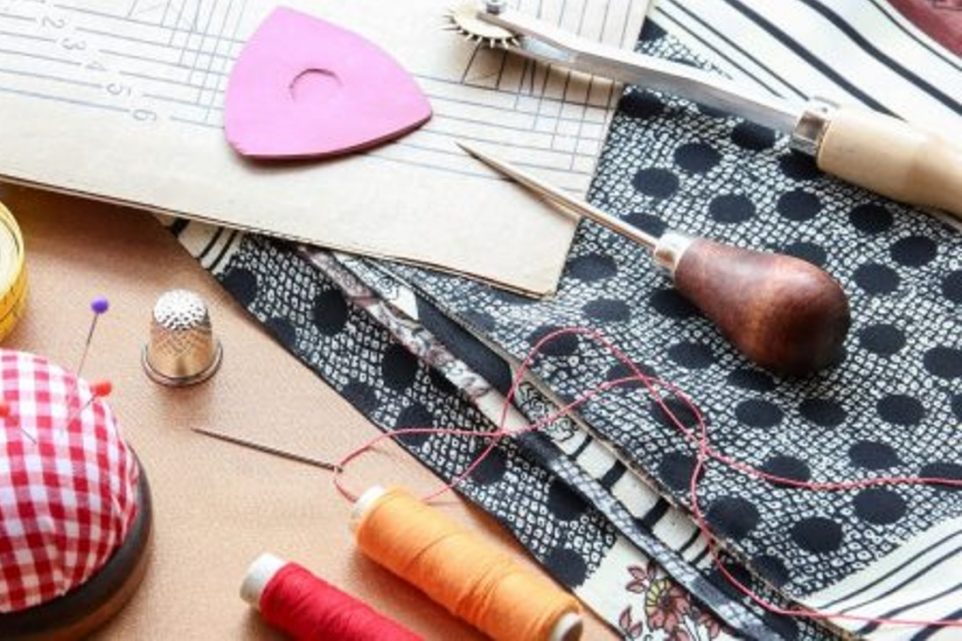10 Sewing Tools Every Crafter Should Own

Sewing is more than just a hobby; it’s a gateway to expressing creativity and adding a personalized touch to your wardrobe and home. Whether you’re just starting to explore the world of sewing or you’ve been threading needles for years, knowing your tools can elevate your craft significantly. Let’s walk through ten essential tools that are must-haves in every sewer’s kit, detailing why each one is so vital and how to choose the best options.
1. Sewing Machine
A good sewing machine is the heart of all sewing projects. The market offers a wide range from basic models perfect for beginners to sophisticated machines packed with features for the pros. Consider what you’ll be making most often. Are you into fashion, home decor, or maybe some quilting? Each realm might benefit from specific machine features like stitch variety, buttonhole capabilities, or adjustable speed settings. Investing in a sewing machine that aligns with your sewing ambitions will not only make the process smoother but also more enjoyable.
2. Scissors To Cut with Precision
Not all scissors are created equal, especially in sewing. Fabric scissors are specially designed to cut through textiles effortlessly, giving you clean, sharp lines without fraying the edges. It’s wise to invest in a dedicated pair just for fabric to keep them sharp. You might also consider a smaller pair of snips for clipping threads and another for more intricate cuts. Remember, dull scissors can be the bane of a sewing project, leading to uneven cuts and wasted material.
3. Measuring Tools
Imagine trying to build a house without a tape measure; that’s what sewing without measuring tools would be like. A flexible tape measure is crucial for taking body measurements, while a rigid ruler is better suited for fabric cutting. Some sewers also swear by a sewing gauge—a small ruler with a sliding pointer for marking small measurements like hem depths or button placements.
4. Pins and Needles
Pins hold your fabric together before you make the stitches permanent, and the right needles can make your sewing seamless, quite literally. From sharp, fine pins that slip easily into delicate fabrics without leaving marks, to sturdy quilting pins for heavier materials, your choice matters. Similarly, using the right needle for different fabric types (denim, silk, cotton) ensures that you don’t damage the material or break your needle midway through a project.
5. Seam Ripper: Your Undo Button
Mistakes happen to the best of us, and a seam ripper is your go-to tool for when they do. This little tool with a sharp point and a cutting edge tucked safely away can quickly undo stitches without harming the fabric. It’s a good idea to keep one handy to make corrections easy and stress-free. Think of it as your little magic wand that makes it okay to mess up sometimes because you can always start over.
6. Thread Assortment
Threads are like the paint of sewing. A good assortment of quality threads in various colors and weights can immensely affect the appearance and durability of your projects. While polyester threads are versatile for a range of fabrics, cotton threads are perfect for sewing cotton materials. And for something a bit more robust, for upholstery or outdoor fabrics, heavy-duty threads are your best bet.
7. Iron and Ironing Board
Never underestimate the power of pressing your fabric. An iron and ironing board are indispensable in sewing for achieving professional-looking results. They’re used not just for pressing finished garments but also for setting seams, creasing pleats, and preparing fabric before it even gets under the needle. A good steam iron can handle a range of fabrics, from sturdy denims to delicate silks.
8. Pincushion To Keep Things Tidy
A pincushion provides a convenient spot to store needles and pins safely, keeping them organized and within reach. Whether you choose a traditional tomato-shaped pincushion or a magnetic one, make sure it fits your sewing setup. Some pincushions come with sections for different types of pins or even a small attached sharpener.
9. Fabric Marking Tools for Precise Planning
Marking tools are essential for transferring pattern markings onto your fabric accurately. Whether you prefer using traditional tailor’s chalk, washable fabric pens, or even a simple piece of soap, what matters is that the marks are visible but not permanent. Testing on a scrap of fabric first can save you from any heartache of stains or marks that won’t come out after the piece is completed.
10. Rotary Cutter and Cutting Mat
For those projects requiring multiple cuts or precise shapes, a rotary cutter paired with a cutting mat is a game-changer. The cutter slices through multiple layers of fabric with ease, making it ideal for quilting or any project with repetitive cuts. The mat not only protects your table but also keeps your blades sharper longer. Remember, working with a dull blade can be as frustrating as using blunt scissors!
Each tool in your sewing kit plays a pivotal role in transforming a piece of fabric into a work of art. As you grow in your sewing journey, you’ll find these tools not only useful but essential in bringing your creative visions to life.
Trusted Insights from Artists
At Art Life Today, our passion for arts and crafts is at the heart of everything we do. We understand that the right tools and materials can make all the difference in your creative projects, so we take our responsibility as reviewers seriously. Our goal is to help you discover the best products that will inspire your creativity and bring your artistic visions to life.